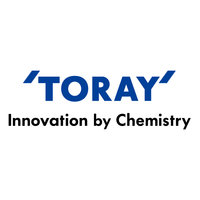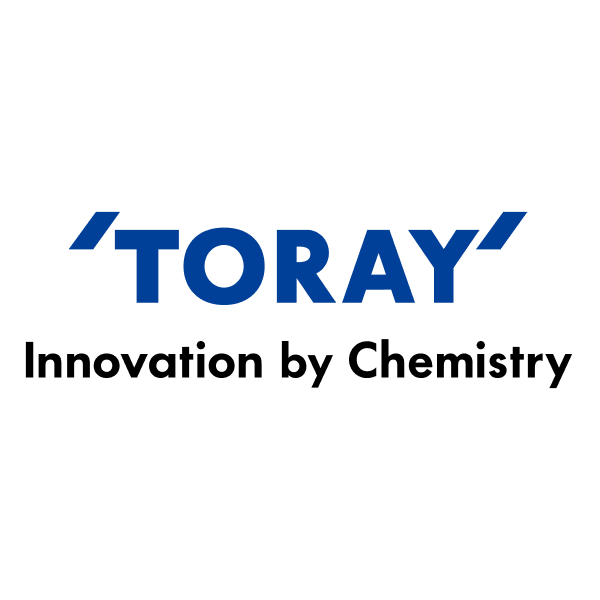
Toray Industries Inc
TSE:3402


Utilize notes to systematically review your investment decisions. By reflecting on past outcomes, you can discern effective strategies and identify those that underperformed. This continuous feedback loop enables you to adapt and refine your approach, optimizing for future success.
Each note serves as a learning point, offering insights into your decision-making processes. Over time, you'll accumulate a personalized database of knowledge, enhancing your ability to make informed decisions quickly and effectively.
With a comprehensive record of your investment history at your fingertips, you can compare current opportunities against past experiences. This not only bolsters your confidence but also ensures that each decision is grounded in a well-documented rationale.
Do you really want to delete this note?
This action cannot be undone.

| 52 Week Range |
635.2
962.2
|
| Price Target |
|
We'll email you a reminder when the closing price reaches JPY.
Choose the stock you wish to monitor with a price alert.
This alert will be permanently deleted.
 Toray Industries Inc
Toray Industries Inc


 You don't have any saved screeners yet
You don't have any saved screeners yet

Thank you very much for joining us today despite your busy schedule. On behalf of Toray Group, I would like to take this opportunity to extend my gratitude towards your continued understanding and your interest in our management and business activities. Now I would like to report Toray's business results for the first quarter ended June 30, 2022, and business forecast for the fiscal year ending March 2023. Now I'd like to follow the table of contents shown on Page 1. I'd like to begin with an overview of business results for the first quarter ended June 30, 2022.
Please turn to Page 3. I Consolidated revenue for the first quarter increased 17.9% compared with the same period a year earlier to JPY 605 billion. Core operating income decreased 24.9% to JPY 27.1 billion, and profit increased 34.3% to JPY 39.9 billion.
Page 4 is about special items. Special items for the first quarter improved by JPY 24 billion to plus JPY 23.8 billion compared with the same period of the previous fiscal year, owing mainly to gain on JPY 25.1 billion of revaluation of investments resulting from establishment of the joint venture.
Page 5 is about assets, liabilities, equity and free cash flow. As of June 30, 2022, total assets stood at JPY 3,242.6 billion, up JPY 198.7 billion from the end of the previous fiscal year due primarily to an increase in inventories and investments accounted for using equity method. Total liabilities increased JPY 82.6 billion from the end of previous fiscal year to JPY 1,626.9 billion, owing mainly to increases in bonds and borrowings. Total equity rose by JPY 116.0 billion compared with the end of the previous fiscal year to JPY 1,615.7 billion. Owner's equity was JPY 1,517.6 billion. Interest-bearing liabilities was JPY 993.4 billion, and D/E ratio was 0.65. Free cash flow was minus JPY 3.6 billion.
Page 6 explains about capital expenditures, depreciation and amortization and R&D expenditures. Capital expenditures for the first quarter decreased by JPY 1.6 billion to JPY 16.0 billion on a year-to-year comparison. Meanwhile, depreciation and amortization increased by JPY 1.5 billion to JPY 32.1 billion. R&D expenditures increased by JPY 2.2 billion to JPY 16.7 billion compared with the same period of the previous fiscal year.
This graph on Page 7 describes the factor analysis of JPY 9.0 billion decrease in core operating income for the current first quarter on a year-to-year comparison. The difference in quantity was up JPY 2.7 billion, mainly due to increase in sales volume. The net change in price was a minus JPY 4.8 billion due to the rise in raw materials and fuel prices compared with the same period of the previous fiscal year. We have been working to pass on the rise in raw materials and fuel appliances to the sales price, but this has not been enough to cover the price increase. Cost variance and et cetera, was minus JPY 8.3 billion, mainly due to soaring transportation cost and increase in operating expenses from recovery in economic activities.
The chart on Page 8 shows the revenue and core operating income results by segment. Using Page 9 and after, I'd like to explain the results of each segment. First, Fibers & Textiles. Revenue of the overall segment increased 22.6% to JPY 225.8 billion compared with the same period year-on-year and core operating income decreased 26.2% to JPY 8.7 billion. Difference in quantity was positive, but the net change in price turned negative due to the increase in raw materials and fuel prices compared to the same period of the previous fiscal year. Cost variance, et cetera, was also negative due to the soaring transportation cost in apparel applications. Sports and outdoor applications performed strongly, and some region shows a recovery from pandemic, though there was an impact of the lockdown in China. In the industrial applications, there was a decrease in demand for automotive applications from the decline in automobile production volume.
Page 10 is the Performance Chemicals segment. Revenue increased 10.1% to JPY 245.0 billion compared with the same period a year earlier and core operating income decreased 39.5% to JPY 16.9 billion. Difference in quantity was negative due to the decline in automobile production volume and the lockdown in China. The net change in price was also negative, although we worked to proceed with passing on the rise in raw materials and fuel prices to the sales price.
I'd like to explain the condition of each business on the next page. The Resin business was weak given the decline in automobile production volume and the lockdown in China. In the Chemical business, Fine Chemicals performed strongly. In the film business, we have been working to pass on soaring raw materials and fuel prices to the sales price for [ pet ] films, but this has not been enough to cover the increase in raw materials and fuel prices. Also, battery separator films for lithium-ion and secondary batteries for the automotive applications was slow. In the electronic and information materials business, demand for circuit materials decreased.
Page 12 is the Carbon Fiber Composite Materials segment. Revenue increased 41.4% to JPY 68.6 billion compared with the same period year-on-year and the segment posted core operating profit of JPY 2.4 billion, an increase of JPY 4.5 billion from the same period a year earlier. While the segment was affected by the increase in raw materials and fuel prices and the decline in the production rate of commercial aircraft and aerospace applications, the sales of wind turbine blades and pressure vessels and industrial application expanded. There was also growth in sport applications. In addition, the segment went forward with passing on the rise in raw materials and fuel prices to the sales price.
I'd like to explain the status of each application on the next page. In the aerospace applications, there were impacts from depreciation of the yen and front-loaded shipments, although the production rate of commercial aircraft remained slow. In sports applications, demand for bicycles, fishing rods and golf shaft vacations for outdoor leisure remains strong. In terms of regulatory products and the industrial applications, demand for environment and energy-related fields led by complex natural gas tax applications and automotive applications for super luxury cars in Europe saw a recovery. As for large store products, shipment of wind turbine blade applications remained strong.
Page 14, in the Environment & Engineering segment, revenue increased 16.1% to JPY 50.7 billion compared with the same period a year earlier and core operating income increased 2.3% to JPY 3.5 billion. In the water treatment business, demand for reverse osmosis membrane and other products grew strongly, and facilities that newly started operations contributed to the performance. In Japanese subsidiaries, an engineering subsidiary experienced increases in the shipment of lithium-ion secondary battery related equipment.
Page 15 is the Life Science segment. Revenue increased 7.6% to JPY 12.3 billion compared with the same period year-on-year and core operating income was JPY 0.1 billion. In the pharmaceutical business, sales of pruritus treatment REMITCH were affected by introduction of its generic versions as well as by a NHI drug price revision. Shipment of dialyzers for hemodiafiltration grew strongly in Japan, but the business was affected by the soaring prices of raw materials and fuels.
Page 16 shows the business results of major subsidiaries and regions. At Toray International, sales of Fibers and Textiles, Resins and Chemicals increased. At our subsidiary in Southeast Asia, a recovery trend for apparel applications was seen in fibers and textile market. In the industrial applications, there was a decrease in demand for automotive applications from the decline in automobile production volume. In the Performance Chemicals business, ABS resins business was affected by the decline in production volume by Chinese customers due to lockdown in China. In addition, we were affected by the decline in production volume of our customers in Asian countries that import production parts from China. Also, there was a shrinkage and spread from easing the supply and demand of ABS resins.
At our subsidiaries in China, in the Fibers & Textiles business, demand was strong for apparel applications, although some business were affected by the lockdown in China and by the rise in raw materials and fuel prices. In the Performance Chemicals business, demand for chemical products were strong. As for our subsidiaries in Republic of Korea and the fibers and textile business, sales of nonwoven fabrics for domestic customers increased but was affected by the rise in raw material prices and fuel prices. In the Performance Chemicals business, the film business, sales of battery separator films for lithium-ion secondary batteries decreased. In the electronic and information materials business, there was impact from decrease in production volume of LCD panels for TVs and smartphones.
Next, I'd like to explain the consolidated business forecast for the fiscal year ending March 2023. Please turn to Page 18. The global economy, including Japan, is facing high downward risks and increasing uncertainties, including strong material prices caused by the Ukraine situation, acceleration of inflation worldwide, economic downturn in the U.S. and Europe, triggered by interest rate hikes and debt crisis concerns in emerging countries as well as the impact of China's zero-COVID policy. For the fiscal year ending March 31, 2023, Toray revised its full year consolidated forecast announced on May 13. Taking into consideration its business performance for the first 3 months of the fiscal year and the business environment, it now expect revenue of JPY 2,625.0 billion. core operating income of JPY 140.0 billion and profit of JPY 100.0 billion remained unchanged. This forecast from July onwards is based on an assumed foreign currency exchange rate of JPY 125 to the U.S. dollar.
Page 19 shows the consolidated business forecast for the fiscal year ending March 2023 by segment.
Page 20 shows the comparison of core operating income between the initial forecast and the new forecast with breakdowns into segments. The focus behind the differences are shown on the right side of the table.
This concludes my presentation. Thank you very much.
[Statements in English on this transcript were spoken by an interpreter present on the live call.]